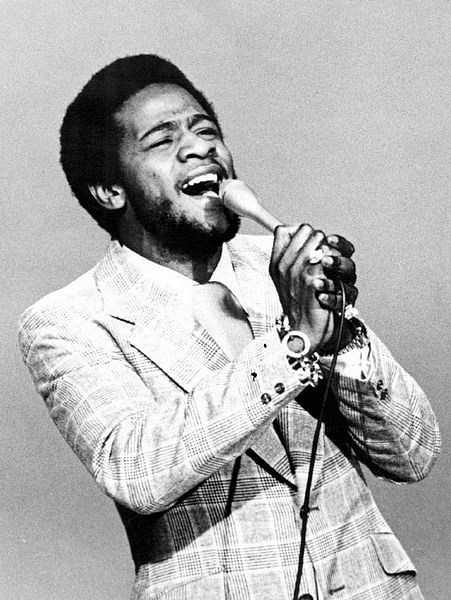Al Green – Biography, Songs, Albums, Discography & Facts

QuickLinks
Al Green Biography
Albert Leornes Greene, or Al Green, is an American singer, songwriter, pastor, and record producer. He’s most famous for his soul hits in the 1970s like “Take Me to the River” and “Let’s Stay Together.” Green became a preacher and switched to gospel music after his lover’s suicide. Eventually, he went back to secular music.
In 1995, Green got into the Rock & Roll Hall of Fame. The museum says he’s one of the best soul singers. They call him “The Last of the Great Soul Singers.” Green won 11 Grammy Awards, including the Grammy Lifetime Achievement Award. He also got the BMI Icon award and the Kennedy Center Honors. Rolling Stone put him at No. 65 on their list of the 100 Greatest Artists of All Time. They also ranked him at No. 14 on their list of the 100 Greatest Singers.
Al Green was born Albert Greene on April 13, 1946, in Dansby, Arkansas, a tiny hamlet near Forrest City. He began singing gospel music with his family as part of the Greene Brothers at an early age.
The Greene Brothers kept touring on the gospel circuit after the Greene family moved to Michigan. They got kicked out of their family home for listening to Jackie Wilson’s secular music. Green started the Creations, which later became Al Greene and the Soul Mates. The Soul Mates had a hit with “Back Up Train” and got a gig at New York City’s Apollo Theater. But they didn’t make the most of their hit, so the group split up and Al Green went solo. He decided to drop the last “e” from his surname.
Green opened for producer Willie Mitchell on the road in Texas in 1968. Mitchell signed Green to Hi Records in Memphis, Tennessee after being impressed by what he heard. Green’s gentle phrasing and falsetto embellishments took soul in a new path as he began working closely with Mitchell.
Green had a hit cover of The Temptations‘ “I Can’t Get Next to You” in 1971. Mitchell produced Green’s other big hits of the 1970s, like “Let’s Stay Together” and “I’m Still in Love with You.” Green became a star with his ballads, giving roses to female fans and his amazing voice. In 1973, Green became a Christian while on tour. Despite his new religion, Green continued to travel and release songs as before. Sometimes, he surprised fans by pausing to preach during shows. But on October 18, 1974, Woodson, a woman who left her family for Green, attacked him with boiling hot grits in his bathroom. Woodson then killed herself at Green’s Memphis home.
He devoted himself to his faith during his lengthy recuperation from third-degree burns. When Green was recovered, he purchased a church in Memphis, the Full Gospel Tabernacle, and began leading services there. Green, in addition to becoming a preacher, returned to spiritual music.
In 1977, Green released The Belle Album, which he produced himself. Mitchell didn’t want to work on gospel music. The song “Belle” is about a guy torn between his love for a lady and his devotion to God. It shows Green’s new direction in life.
After his stage fall in 1979, Green decided to focus on his church and release only inspirational songs. But in the late 1980s, he started performing some of his secular hits along with his religious music. He even did duets with Annie Lennox and Lyle Lovett, and had a role on the TV show Ally McBeal.
In 2003, Green released the album I Can’t Stop. It was produced by Willie Mitchell, who he had worked with before. In 2008, Green tried something new with his album Lay It Down. He worked with Roots producer Ahmir “Questlove” Thompson and organist James Poyser. Green has become comfortable with both his popular music and his monastic vocation. He left behind the songs that made him famous. Rolling Stone magazine has even named him one of the “100 Greatest Artists of All Time.”
Al Green Discography
| Full of Fire | |
| Al Green Is Love | |
| Al Green Explores Your Mind | |
| Livin’ for You | |
| Call Me | |
| I’m Still in Love with You | |
| Let’s Stay Together | |
| Al Green Gets Next to You | |
| Green Is Blues | |
| Back Up Train |
Top Videos
Frequently Asked Questions
What Is Al Green Most Known For?
Al Green is a famous soul singer and songwriter. He’s got lots of hit songs, like “Let’s Stay Together” and “Tired of Being Alone.” Green has even won eight Grammy Awards.
What was the first big hit by Al Green?
Al Green had a big hit with “I’m Still in Love with You” in 1972. It reached number one on the R&B charts. Green wrote the song and Willie Mitchell produced it.
What Is Al Green’s Best Album?
Al Green’s best album is “I’m Still in Love with You” from 1972. It has the hit singles “I’m Still in Love with You” and “Look What You Done for Me,” which are some of Green’s most famous songs. “I’m Still in Love with You” is often seen as one of the greatest soul albums ever and is definitely one of Al Green’s most important releases.
How Many Albums Did Al Green Have?
Al Green has released a total of eight albums.
Who Produced Al Green’s Music?
Al Green’s music was mostly produced by Willie Mitchell. They worked together for a long time and had a really successful partnership. Green has also worked with other producers like Allen Toussaint, Mabon “Teenie” Hodges, and George Clinton.
